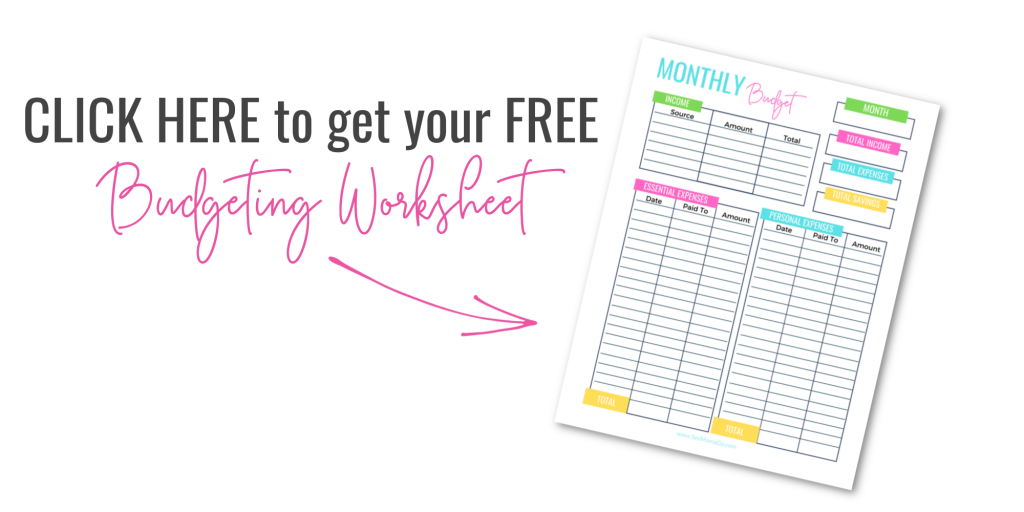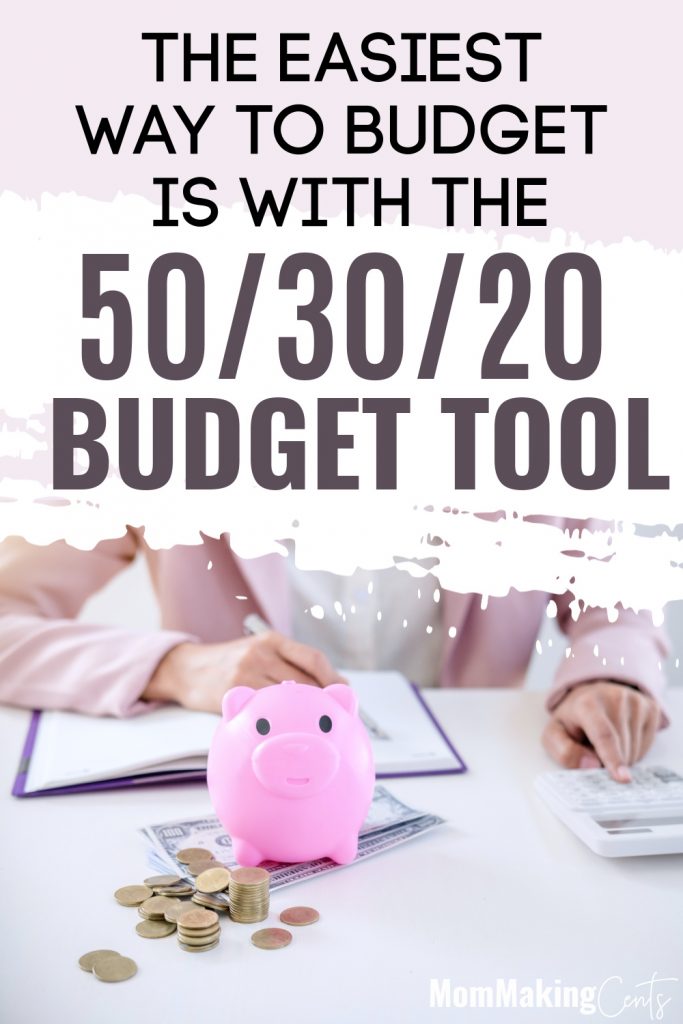Starting a budget can actually be painless and simple if you start off using the 50/30/20 budgeting rule.

Looking For an Easy Way to Budget?
The 50/30/20 Budgeting Rule is a great budgeting tool for beginners!
So maybe you are just starting off on your own and responsible for your money for the first time in your life.
Or maybe you’ve been at it a while and you just are not good with setting a budget.
Or it could be that you have gotten yourself into a big financial hole and you don’t even know where to start.
No matter what your circumstance, you can easily create a simple budget by using the 50/30/20 budgeting rule.

The 50/30/20 Budgeting Rule
Chances are, you’ve never even heard of this. I like to think that I’m pretty money savvy.
My parents taught me all about finances as a teen. I’ve had great credit, a solid savings account, owned several homes, and had a 401k since I started my first job.
But even I got myself into the typical American credit card debt hole. No matter how money savvy you are, it’s hard to say no to a good sale… a trip with your friends… or a few meals out once in a while.
It wasn’t until about my 30’s where I realized… this debt is never going away. The last thing I want to do is work until I’m 80, so tackling my debt AND saving money became a big priority.
Enter the 50/30/20 budgeting plan…
When most people think about budgets, they think about expensive accountants or super long spreadsheets.
So most of the time it’s easy to just postpone until another day. But the 50/30/20 rule of budgeting is so simple to figure out, you will have your budget set up in no time.
You don’t need to be a crazy financial expert. And you definitely don’t need those long spreadsheets no one can figure out.
Just grab a pen and paper (and a knowledge of your money income and bills) and let’s get started!
What is the 50/30/20 Budgeting Rule?
Easy peasy. You basically take all your bills, debt, etc and split it into 3 groups. everything you spend falls into those three categories.
You just have to figure out what goes where and how much.
Your monthly budget is divided into 3 categories: Expenses, Personal choices, and financial priorities. Confused yet? I’ll explain more, hang in there!
50/30/20 Budgeting Categories
Category #1 – Expenses (50%)
When we talk about expenses in this category, we mean essential expenses. So here is where you really need to sit down and think about what is essential and what is not.
Food, Water, Housing, Transportation… these are all essential items you need to survive day by day.
A lot of times I heard things from people like “But I NEED my cable… I NEED the internet” Unfortunately, no you don’t. Those are considered luxury items.
Especially with Netflix or Hulu, you don’t need a cable bill. And the internet? Maybe if you work from home, but if you’re using it to go on Facebook and shop online… it’s not essential!
Category #2 – Personal choices (30%)
Not all budgets require you to live frugally and never have any fun. This category is for your fun money. And 30% is a lot!
So anything you would do that is not considered essential falls into this category.
Eating out, movie tickets, cable/internet, new clothes, traveling, etc. all get put into this category
Category #3 – Financial priorities (20%)
The smallest category, but possibly the most important if you don’t want o work the rest of your life, is this category. Financial priorities!
What are financial priorities? Here are some examples:
- Debt payoff (credit cards, etc)
- Retirement savings
- Saving Money
Those are probably just the 3 most popular, but you can include things like investments or even a college savings plan for your kids. This category is meant to build your future.
It’s up to you to decide how that 20% gets divided up. If you want to put all 20% towards your credit card debt, you can do that. Although I do recommend always putting something towards your retirement!
Common questions about the 50/30/30 budgeting plan
Because not every situation is the same, there might be some variations that you experience that others may not. Here are some great examples:
What if my car payment is $500 a month, but I pay $700 a month to pay it off faster?
Since car payments fall under the Essential expenses category, what do you do?
You take $500 of that payment and put it in your essential categories category.
The other $200 you overpay would be a part of your third category, financial priorities.
What if I live a very frugal life and don’t want to include 30% of my income for personal expenses?
You don’t have to! Good for you if you want to spend less money as ‘fun money’ and save more.
This is where the plan can be flexible. It’s up to you to decide if maybe you want to decrease the second category to 20% or lower.
Just don’t ever increase your budgeting to the category of your personal choice! That’s how we all get into trouble in the first place.
What if I don’t have a car payment? Or I live at home with my parents and have no housing payment?
Every situation is different! Maybe you live in New York City and have really high living expenses, but no transportation costs.
Or maybe you live at home or with a roommate but have to drive an hour to work each day.
The categories can be flexible based on your own needs.
Is this budgeting plan based on my gross income or net income?
I’m glad you asked! First, let’s briefly go over what Gross and Net income mean because a lot of people confuse this!
Gross income is the money you earn BEFORE taxes and deductions. Net income is the money you take home on your paycheck, AFTER taxes, and deductions.
So the 50/30/20 budgeting plan should always be based on your NET INCOME, the money you get from your paycheck.
Final Thoughts of the 50/30/20 Budgeting plan
The 50/30/20 Budgeting plan is a great place to start if you are not great at budgets. It’s simple, and easy to understand, and breaks it down into 3 categories.
If you’re looking for more ways to save money, live more frugally, and build wealth, check out these other resources!

Pin for later!


Leave a Reply